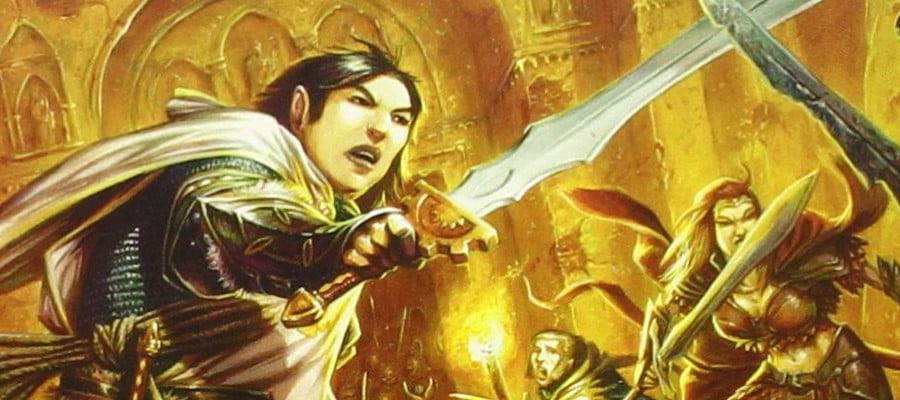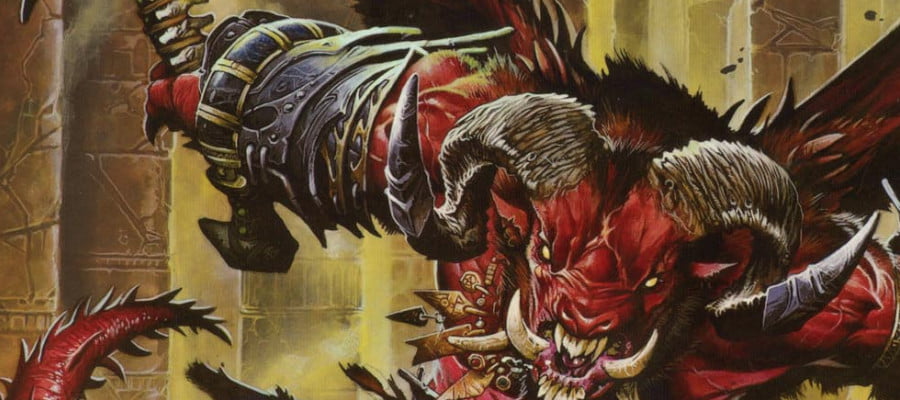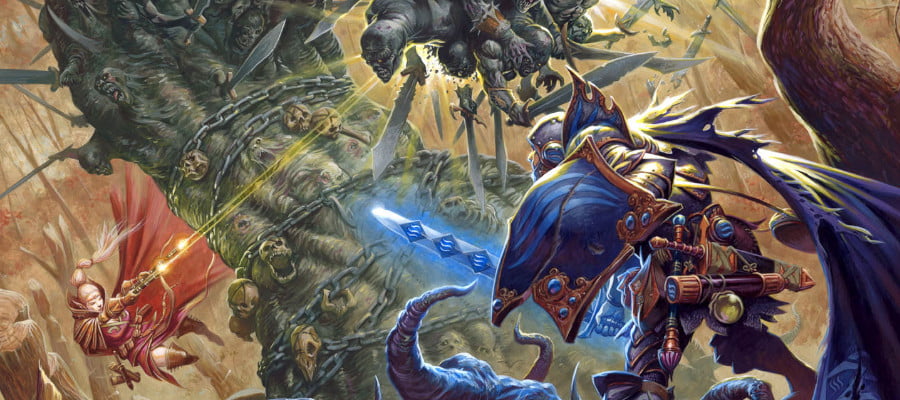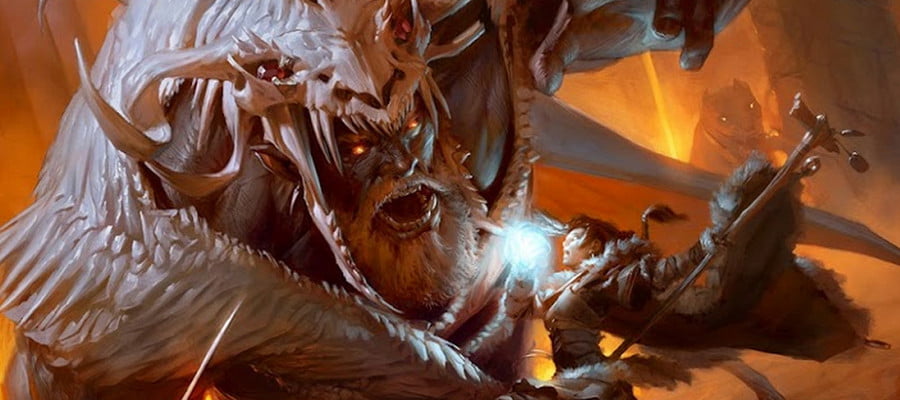I have never found feats or abilities that amplify the effect of critical hits to be exciting in 4th edition. There are plenty of them — almost every book features an effect that looks really cool and special, but it only fires off when you critically hit an opponent. You can have powerful effects on crits, mind you! Famously, D&D offers in its history, the Vorpal Sword, a weapon that decapitates on a crit – fight over, we are done. And the vorpal weapon is part of a powerful lineage of reasons to want to crit.
A while ago, a friend described for me the idea of a ‘raisins sentence’ where the excitement in the sentence increases every step, until suddenly dropping off a cliff, demonstrated with the phrase:
Would you like some chocolate covered raisins
The idea is that every part of this sentence is great but the raisins makes the whole thing disappointing. A lot of the crit-based feats, powers, and item rules are like that. Sure, crits are great! They can be very powerful, and making crits even better is even better still. But when a feat describes a strategy or a style of play that’s exciting that kicks in or triggers when you crit, all the air goes out of my enthusiasm.
Why, though?
Ehhh, a couple of reasons.

Now, I’m not about to bust out comparison tables, but to simplify if you can crit on 1 of the 20 numbers, then in a fight where you roll 20 dice, you’re probably going to get a crit. If you make one attack every turn, then you’re going to need 20 turns to expect to crit. I’m not used to 4e D&D fights taking that long and I play a lot of this system. That right there makes ‘when you crit’ effects seem pretty unlikely, especially because even in long fights where the odds are in your favour that it happens, you might not get your crit until towards the last third of the fight – and statistically, that’s likely about a third of the time.
This means that effects triggering on a crit don’t give a reliable output — you can’t rely on them showing up when you want them. You could get your crit effect that makes you hit super hard on an enemy that’s going to die instantly when you hit them. You could get your encounter-long buff or long-lasting bleed effect on an enemy that isn’t going to notice or care or need the effect.
This can mean ‘crit support’ lives in this weird space where no matter how powerful it is, it just doesn’t interest me much. Too unreliable!

I think though, that this is one of those signs of the lessons learned from 3rd edition D&D. In that edition, there were a few ways to get ‘improved crit’ — a critical threat range that could be expanded by the number the weapon started with. For a weapon that crit on a 20, that meant improving the crit got you a 19-20 crit range. For a weapon that started at 19-20, you got 17-20. For a weapon that started at 18-20 – and they were around, the Jovar and the Scimitar being two widely used examples – then your crit range expanded to six numbers on the dice, 15-20.
If your DM fell asleep at the wheel and let you use the 17-20 crit range from the Punch Knives in Sword and Fist (don’t use this, it’s dumb), then your critical hit range with just the Improved Criticals feat would streak up to 13-20, or almost half of all the possible numbers you can hit on. That was weapon choice + one feat, and there were ways to push it higher! A particularly aggressive build that didn’t compromise anything could run around critting on 9-20, and then it was just a matter of time before that character got effects like Vorpal on their weapons, and made every combat a sequence of hit rolls before they decapitated people. The damage became irrelevant, you just wanted to make sure you hit and then could follow up the hit with some ludicrous extra effects every time. And this is 3e, when most melee fighting characters were making 4-5 attacks a turn.
In 4e, this kind of build just isn’t very doable, at least, not like that. As good as a crit can be, you can’t really get these huge expanded crit ranges. There are weapons that crit on more numbers, but if that’s their magical property, they can’t be vorpal weapons. There are feats that make you crit more often, but they are often linked to specific feats and classes, and small windows of time like ‘until end of turn.’
Your only strategy, then, to get more crits under 4e, largely, is to roll more dice.

This can be pretty tricky, too, because the best ways to roll more dice is to make more attacks. Area attackers, like control archetypes (hello druid, I love you druid) get to roll a lot of dice, and that can be good, but they also don’t tend to get effects that do a lot on a crit on their weapons. Not nothing, but nothing as exciting as you see in melee weapons.
The generally-agreed upon, simplest way to do it, then, is to blend together the ranger with some avengerness, or an avenger with some rangerness, or a secret third thing (a bard poaching from both). If you take a pair of jagged weapons and twin strike your oath of emnity, you’re rolling 4 dice every attack and hoping to critically hit by rolling a 19 or a 20. Using our simplified math from up above, that means that you go from one likely crit every twenty turns to one likely crit every two and a half turns.
What’s more, if those weapons are light blades (like, say, daggers) you can attack with them on your off-turn with opportunity attacks in Paragon tier, which means you could be getting 8 dice rolls a turn, which makes a 1/10 chance seem more likely. That’s pretty exciting.

But but but I hear you say, but what about the Righteous Rage of Tempus? Righteous Rage of Tempus is amazing. The feat Righteous Rage of Tempus is available to any divine character (so, Paladins and Avengers) and it makes your next attack deal damage as if it were a crit.
And that’s it.
See, once upon a time, Righteous Rage of Tempus – and if you look it up in the book, it does still say it, – it says the attack is an automatic critical hit. This is obviously really strong, especially since you can control when it happens. You could load a character up with all sorts of ‘when you critical hit’ support, and then they open combat with a front-loaded attack to trigger all of them. And therefore, the fun police came along and changed it so the Righteous Rage of Tempus only gives you the damage of a crit up front.
Which is still cool, and it encourages you to build so that your crits have bigger and more dice rather than trying to crit a lot for secondary effects. That’s an interesting and cool different direction, and it also requires the build to be a bit less… lopsided without a crit.
Essentially then you have two build options that look at crits that I like. One, the crit-fishing avengangerard, and the called-shot crit-hammering Paladin/Avenger build that gets Righteously Mad at something.
1 Trackback